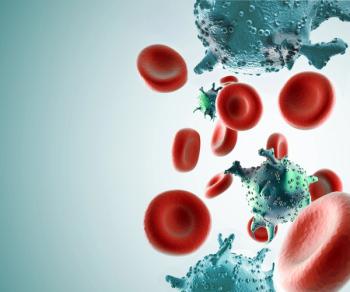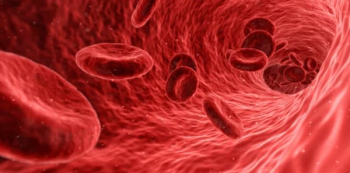
Statin Use Linked With Decreased Risk for DLBCL
In this large population-based, case-control study, having ever used a statin was linked to lower risk of total NHL and certain NHL subtypes, including DLBCL.
Use of statins was associated with a reduced risk for certain non-Hodgkin lymphomas (NHLs), including diffuse large B-cell lymphoma (DLBCL), according to a study
“We have demonstrated that NHL risk was associated with high-potency statins and lipophilic statins, and the association is subtype-specific (for DLBCL and plasma cell neoplasms),” wrote Xibiao Ye, of University of Manitoba, and colleagues. “Our results further support the importance of examining the heterogeneity of NHL risk and the importance of considering statin characteristics in epidemiological studies.”
According to the study, statins have antitumor characteristics, including being proapoptotic, antiproliferative, and anti-inflammatory. Some studies have shown that statins can reduce risk for certain NHL subtypes. In the current investigation, Ye and colleagues examined the association between NHLs and statin use by NHL subtype or statin characteristics.
This population-based, case-control study evaluated 5,541 people with NHL and 27,315 matched controls. The researchers assessed patient use of statins prior to diagnosis and adjusted the odds of statin use for medical conditions, number of family physician visits for 5 years prior to index date, healthcare utilization, income, and use of other medications. Duration of statin use was defined as continuous use for 12 months or longer, and cumulative duration of statin use by quartile.
More than 1 in 4 patients and controls were prescribed statins. Having ever used a statin was associated with a lower risk of total NHL (odds ratio [OR], 0.82; 95% CI, 0.76–0.89) as well as certain subtypes of NHL, including DLBCL (OR, 0.77; 95% CI, 0.65–0.92), plasma cell neoplasms (OR, 0.76; 95% CI, 0.63–0.91), and other B-cell NHL (OR, 0.75; 95% CI, 0.59–0.95).
Use of lipophilic statins alone or with hydrophilic statins was associated with between a 17% and 28% reduction in risk for total NHL, DLBCL, plasma cell neoplasms, and other B-cell NHLs. Overall, the association seemed to be limited to high-potency statins and lipophilic statin users.
“Statins are widely used, thus even a small decrease or increase in cancer risk associated with their use would have significant public health implications,” the researchers wrote. “The findings provide further scientific evidence on statin’s antitumor effects, which may open a door for clinical trials, eventually leading to actionable insights.”
Newsletter
Stay up to date on recent advances in the multidisciplinary approach to cancer.


















































































